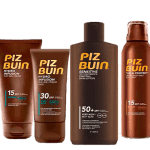10 ways to protect your skin from UV rays
Protecting your skin from UV radiation is essential to prevent sunburn, premature aging, and skin cancer.
1. Use sunscreen
- Broad-Spectrum: Choose a sunscreen that protects against both UVA and UVB rays.
- SPF: Use a sunscreen with a Sun Protection Factor (SPF) of at least 30.
- Application: Apply sunscreen generously 15-30 minutes before going outdoors and reapply every two hours or after swimming, sweating, or towel drying.
- Form: Consider water-resistant sunscreens if you will be swimming or sweating.

2. Wear protective clothing
- Long-Sleeved Shirts and Trousers: Opt for tightly woven, dark-colored fabrics that offer better protection than lighter colors or loosely woven fabrics.
- UPF Clothing: Consider wearing clothing with an Ultraviolet Protection Factor (UPF) rating, which is specially designed to block UV rays.
- Hat: A wide-brimmed hat can provide shade for your face, ears, and neck, areas that are often exposed to the sun.
3. Seek shade

- Avoid Peak Hours: UV rays are strongest between 10 o’clock and 4 o’clock. Try to stay in the shade during these hours.
- Use Umbrellas and Tents: If you’re spending time outdoors, use umbrellas, tents, or canopies to create shade.
4. Wear sunglasses
- UV Protection: Choose sunglasses that block 99-100% of UVA and UVB rays.
- Wraparound Styles: These offer more protection by covering the sides of your eyes.
5. Be cautious near reflective surfaces

- Water, sand, snow, and concrete can reflect UV rays, increasing your exposure
- Take extra precautions in these environments.
6. Monitor the UV index
The UV index measures the intensity of UV radiation. Check local weather forecasts for UV index ratings, and take extra precautions when the index is high.
7. Avoid tanning beds
- Tanning beds emit harmful UV radiation and increase the risk of skin cancer.
- Opt for safer alternatives like self-tanning lotions or sprays.
8. Regular skin checks
Regularly check your skin for any new or unusual moles, spots, or changes in existing moles. Early detection of skin cancer can be lifesaving.
9. Stay hydrated
Keeping your skin hydrated helps maintain its health and repair any damage caused by UV exposure. Drink plenty of water and use moisturizers.
10. Know your skin type
People with fair skin, light hair, or a family history of skin cancer are at higher risk. Understand your skin type and take extra precautions if you’re more vulnerable to UV damage.





